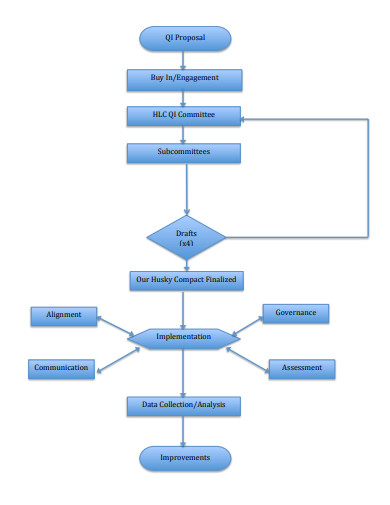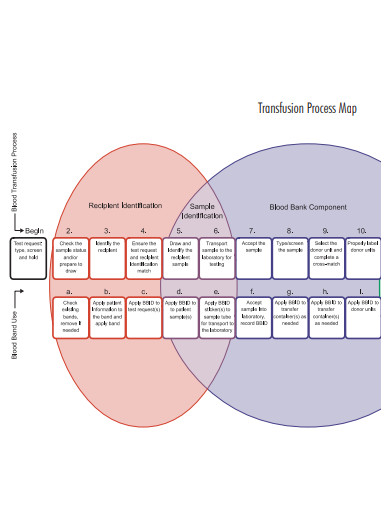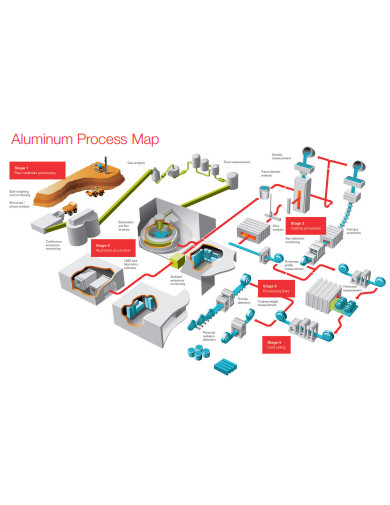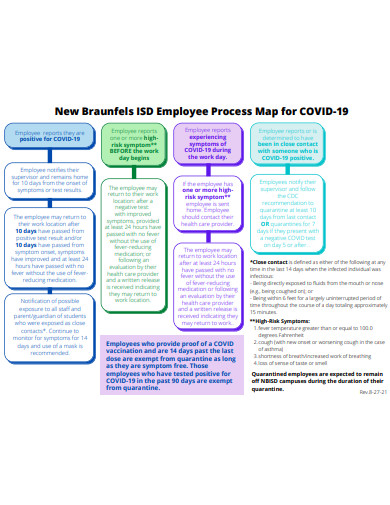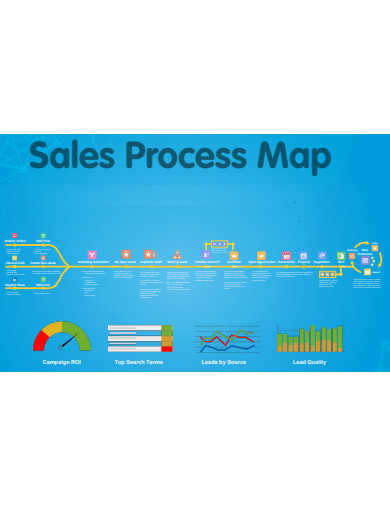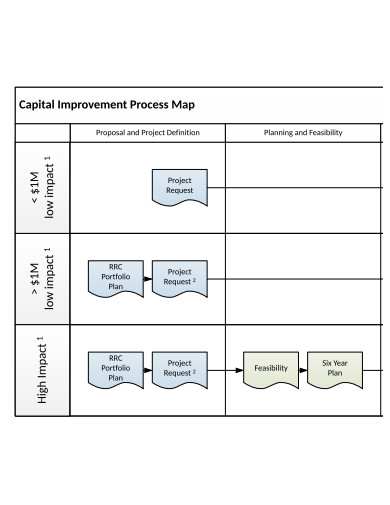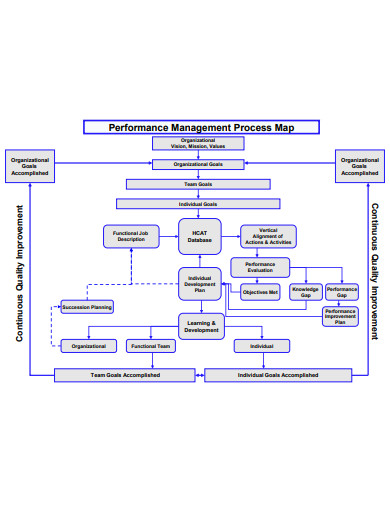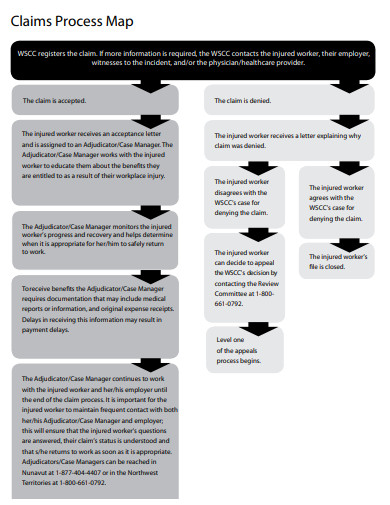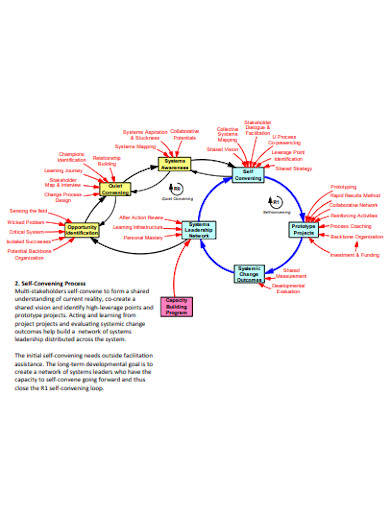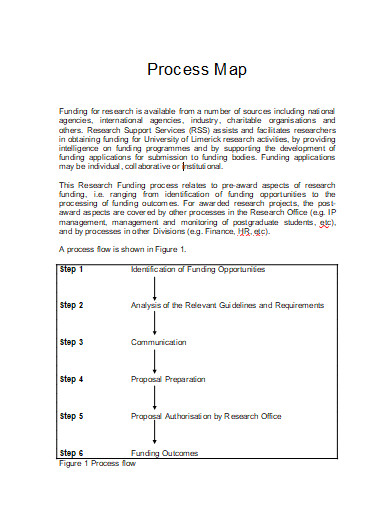Do you ever have a brilliant idea but don’t know where to start? To see your ideas come to life, you must first arrange them and devise a strategy. The organizational process can be aided by process mapping. It’s a graphic illustration of the workflow, equivalent to a work breakdown structure, that can aid in identifying problems and places for development. When undertaking team brainstorming, making decisions, or planning projects, process mapping can be useful. Process maps are also useful for documenting processes, training new hires, and improving processes.
10+ Process Map Samples
Process mapping is a visual representation of procedures. A process map, also known as a flowchart, process flowchart, or workflow diagram, is created. The goal of process mapping is to convey how a process operates in a clear and succinct manner. It enables any team member to comprehend how to execute a task without the need for extensive verbal instructions. You can gain a better knowledge of how a process operates and find inefficiencies or improvements by mapping it out from beginning to end. Process mapping can be used to depict any process, although it’s most commonly used for process analysis, training, integration, and improvement.
1. Process Map
2. Transfusion Process Map
3. Workplace Process Map for COVID-19
4. Aluminum Process Map
5. Employee Process Map for COVID-19
6. Sales Process Map
7. Capital Improvement Process Map
8. Performance Management Process Map
9. Claims Process Map
10. Systemic Change Process Map
11. Process Map Example
Creating Process Map
A process map can be made on paper or with the help of workflow management solutions and templates. The instructions below will show you how to make a process map from the ground up.
Identify a process to map
Determine the procedure you want to lay out first. Is there a process that could be made more efficient? Do you have a new procedure you’d want to present to your team in a clear and straightforward manner? A complicated procedure about which employees frequently inquire? Determine what you want to map and give it a name.
List the activities involved
Make a list of all the steps needed to finish the process. The order is irrelevant at this point. Make a list of all the actions that will be performed, as well as who will be in charge of each. Collaboration with teammates and other stakeholders who will be involved in the process is a good idea so you can accurately account for all of the stages required and evaluate the amount of detail required. Also, determine where the process begins and finishes so you can determine which actions should be included to achieve the intended outcome.
Write the sequence of the steps
After you’ve generated a list of all the activities, the next step is to organize them in the correct order so that the entire process is depicted from start to finish. This is a good area to double-check whether you overlooked any gaps in the previous phase.
Draw a flowchart
Select the proper process mapping template and draw out the procedure, using process mapping symbolism to convey the steps. There are approximately 30 standard symbols that can be used to represent various aspects of a process.
Finalize and share the process map
Once you’ve completed drafting your process map, go over it with the other participants involved to make sure they all grasp it and approve with how it’s laid out. Make certain that no steps are missing and that there are no repetitions or contradictions.
FAQs
What is the purpose of process mapping?
Process mapping is used to help organizations and enterprises become more efficient. Process maps provide insight into a process, assist teams in brainstorming process improvement ideas, improve communication, and document the process. Bottlenecks, repetition, and delays will be identified using process mapping. They aid in the definition of process boundaries, ownership, responsibilities, and effectiveness measures, also known as process metrics.
What is the benefit of having a process map?
Process mapping exposes waste, streamlines work processes, and improves comprehension. Instead of writing detailed instructions, process mapping helps you to visually explain the critical features of a process.
After you’ve confirmed that the process map adequately depicts the process workflow, you can use it to examine the process and find ways to improve it. Determine where there are obstacles and inconsistencies in the process using feedback from your team. What steps can be cut out? Which jobs can be finished more quickly? Once you’ve discovered these areas for improvement, repair them and update the process map to keep up with the changes.
Related Posts
FREE 10+ Brand Story Samples in PDF | MS Word
FREE 10+ Brand Guidelines Samples in PDF | MS Word
FREE 10+ Employee Offboarding Samples in PDF | MS Word
FREE 10+ Process Documentation Samples in PDF | MS Word
FREE 3+ Introduction About Myself Samples in PDF
FREE 10+ Decision Matrix Samples in MS Word | PDF | DOC
FREE 10+ Diversity and Inclusion Statement Samples [ University, Faculty, Value ]
FREE 10+ Bid Comparison Samples in PDF | MS Word
FREE 10+ HR Records Samples in PDF | MS Word
FREE 10+ Brand Brief Samples in PDF | MS Word
FREE 10+ Merger and Acquisition Template Samples in PDF | MS Word
FREE 10+ Cost Comparison Samples in PDF | MS Word
FREE 10+ Brand Pyramid Samples in PDF
FREE 10+ Workflow Mapping Samples in PDF | MS Word
FREE 10+ Requirements Gathering Samples in PDF | MS Word

